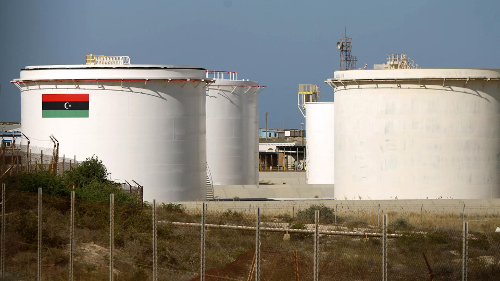Libya restarts production, exports from country’s largest oil field

TLDR
- Libya's largest oil field, Sharara, is resuming operations after a three-week closure.
- The force majeure clause will be lifted, allowing the resumption of oil exports and production.
- The restart follows the government's agreement to fulfill demands made by protesters for social and economic reforms.
After around three weeks of closure, Libya is resuming oil exports and production from its largest oil field. The Sharara oil field, which previously generated around 270,000 barrels per day, will resume operations, and the force majeure clause, allowing the suspension of deliveries, will be lifted, as announced by the state-run National Oil Corp. of the OPEC country.
The decision to restart followed the government's agreement in Tripoli to fulfill most of the demands made by protesters, according to Deputy Prime Minister Ramadan Boujannah in an interview with Libya’s Al-Ahrar TV on Sunday.
The shutdown of Sharara had led to a drop in Libya’s oil production to below 1 million barrels per day, marking the first time in months that production fell to this level. The oil field is managed through a joint venture involving the National Oil Corp., Repsol SA of Spain, TotalEnergies SE of France, OMV AG of Austria, and Equinor ASA of Norway. The closure was initiated by protesters advocating for social and economic reforms, including improved job opportunities, better services, and the establishment of a new refinery.
Key Takeaways
Since the overthrow of dictator Moammar Al Qaddafi in 2011, Libya's energy facilities have been a focal point of conflict, with armed factions intermittently shutting down oil output to exert pressure for political and economic concessions. Despite these challenges, the North African nation managed to maintain a relatively stable production level at around 1.2 million barrels per day for the majority of the previous year. The recent restart of production at Libya's largest oil field had a fluctuating impact on oil futures. The freezing temperatures in North Dakota also contributed to output disruptions. West Texas Intermediate experienced a brief drop of up to 1% before stabilizing around the flatline during midday trading, hovering above $74 per barrel. Meanwhile, Brent futures were trading close to $79 per barrel, having registered an almost 2% increase in the preceding session. The combination of geopolitical events and weather-related factors continued to influence global oil market dynamics.

Next Frontier
Stay up to date on major news and events in African markets. Delivered weekly.
Pulse54
UDeep-dives into what’s old and new in Africa’s investment landscape. Delivered twice monthly.
Events
Sign up to stay informed about our regular webinars, product launches, and exhibitions.




